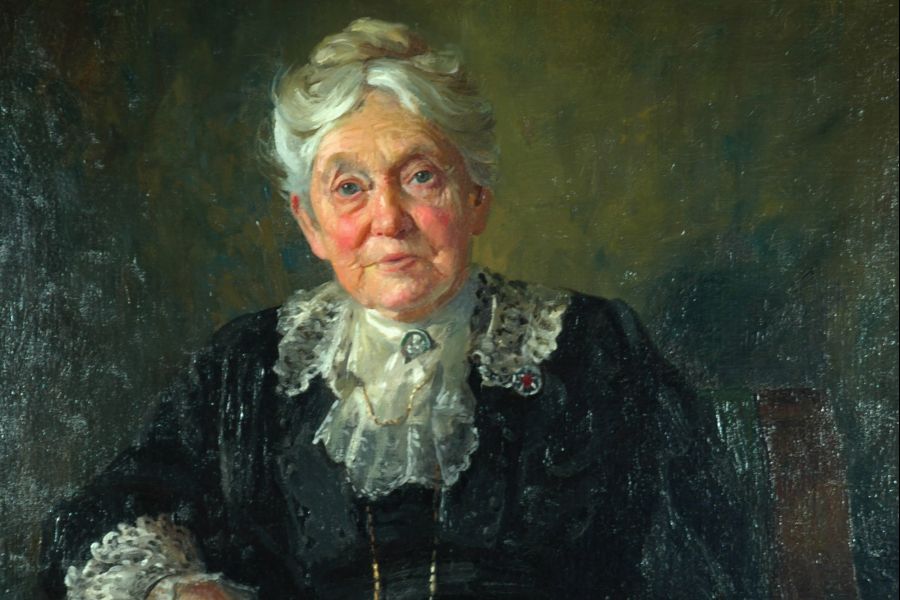The Niagara Historical Society was founded in December of 1895, by a very formidable woman named Janet Carnochan.
Born in Stamford, Ontario in 1839, Carnochan moved to Niagara-on-the-Lake when she was hired to teach at Niagara High School, which is now a part of the museum.
Carnochan saw a great need to preserve the history of Upper Canada. As the War of 1812 became a fleeting memory to many of a new generation, she saw that artifacts from the war were being lost. Carnochan decided something must be done, and became determined to start a historical society.
The first meeting to explore the ideas of a Historical Society was held in the public library on Dec. 12, 1894. The Lord Mayor at that time, Henry Pafford, attended the meeting and acted as the chair. Imagine Carnochan’s surprise when she was voted in as the president, a position she held for more than a quarter of a century.
Carnochan’s goal became the mandate of the society and remains much the same today: “the objects of the Society are the encouragement of the study of Canadian history and literature, the collection and safe preservations of Canadian historical records and relics, and the building up of Canadian loyalty and patriotism.”
With this mandate, Carnochan made it known that the Society was accepting any and all artifacts that pertained to the history of Niagara-on-the-Lake and they soon amassed a collection that outgrew the room donated for the Society’s use in the Court House.
Not to be thwarted by the limitations of the “museum” room, Carnochan (in 1898) put forth the idea that a permanent building must be erected.
In 1899, letters, from the Society were sent out to many ministers of the Crown, requesting support and funding from the Government.
We can read, in one of Carnochan’s own accounts, that the reception of these letters had very much the same response as one would get today from any politician. She was told that “the matter would receive their very serious attention,” or that “the matter would be brought before their colleagues.”
Only one politician, Hon. George William Ross, responded in a positive manner. He suggested that if the Society raised a significant portion of the funds, then the government would consider a contribution as well.
Regardless of support, the Society made the decision to move forward with building a permanent museum. The Society had $150 in the building fund at the time, and the land, which had been donated by Carnochan herself.
On Sept. 17, 1903, the Society agreed to mail out five hundred circulars (todays modern flyer) with a personal letter attached, to all its past and present members, as well as many prominent business owners, asking for monetary support.
It must be remembered that each letter was hand written by Carnochan. No computers, no typewriters, no copy machines in those days, not even ball point pens, just pens dipped in ink. The process of writing all these letters took over six months to complete.
By 1905, the Society had more than $4,000 in the building fund, though the tenders for the construction were more than $7,000.
Members of the Society then met to change the specifications of the building and sent out another request for tenders. This time only one company submitted a tender. Luckily for Carnochan and the Society, it happened to come in under the $4,000 budget.
Construction of the building started in April 1906 and was completed — minus the portico — in the Fall of 1906.
The name of the building was debated, but all agreed that “Memorial Hall” would honour all that was held inside the building, including articles from the E.U. Loyalists who first arrived in Upper Canada, the many regiments of British and Canadian soldiers who defended our freedom on Canadian soil, and the many people who were involved in the development of such a great community.
Upon the opening of the museum, there was already an extensive collection of historical material. It held more than 4,000 articles, 800 books and pamphlets, 1,000 newspapers, 500 pictures, 150 military pieces, 80 pieces of fine china, 300 Indigenous artifacts, 150 garments of women’s ware, and 1,000 documents from municipal and church matters.
Today, the museum houses an even larger collection of more than 50,000 artifacts, many from the cherished first collection of Carnochan.
A large majority of this collection is now in the museum database, with over 3,500 pieces available for viewing online.
The town of Niagara-on-the-Lake is a “town of firsts,” I like to say.
It was home to the first English settlement on this side of the Niagara River after the American Revolution. It was home to the first parliament of Upper Canada, the first Masonic temple, the first circulating library, first newspaper, and it had the first parliament in the new world to ban the trade of slaves.
One might ask, “what is so unique about Memorial Hall?”
Not only does it house the history of the aforementioned, it is the first purpose-built museum in Upper Canada. Memorial Hall is older than the Royal Ontario Museum in Toronto by ten years.
___________________________________
Additions and expansion to the Museum occurred when the 1875 Niagara High School next door to the museum— the same school Carnochan taught at — was taken over by the Society in the 1940’s. In the 1970’s, the Link building was constructed to join Memorial Hall to the Niagara High School.
The mandate of the Historical Society is much the same today as it was written in 1894. However, there was one change to it, which was to be more focused on preserving the history of Niagara-on-the-Lake.
____________________________________
To learn more about the Memorial Hall museum you can visit their website at, www.niagarahistorical.museum, or visit the museum in person.
Memorial Hall is located at 43 Castlereagh Street, Niagara-on-the-Lake.
Visit, or give them a call at 905-468-3912.
Denise's full profile can be found here, niagaranow.com/profile.phtml/13.
[ad-banner-3]











